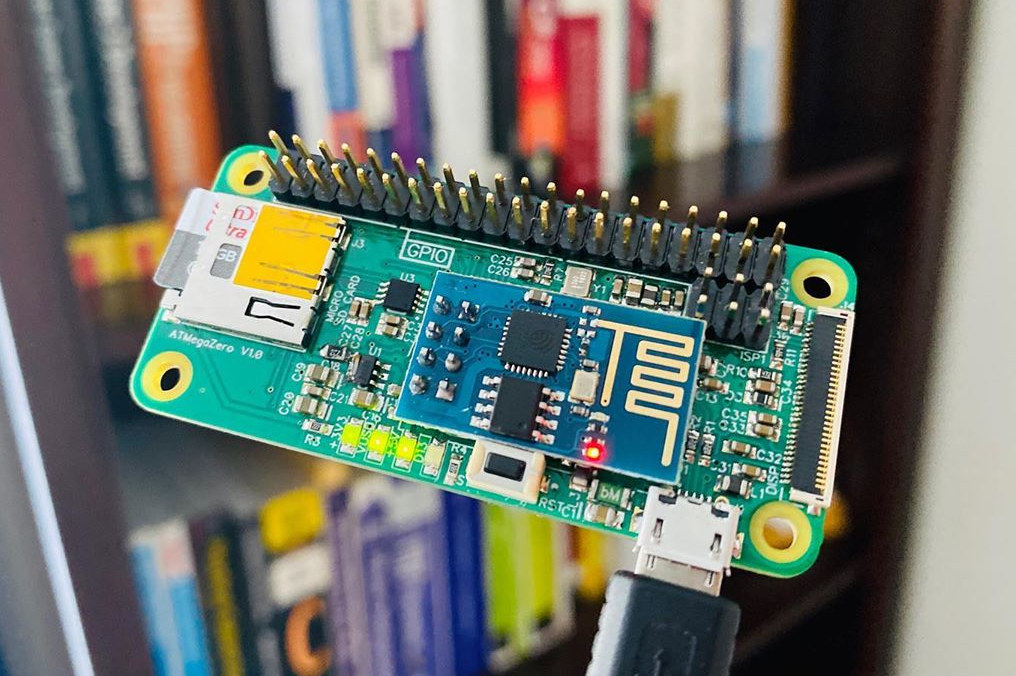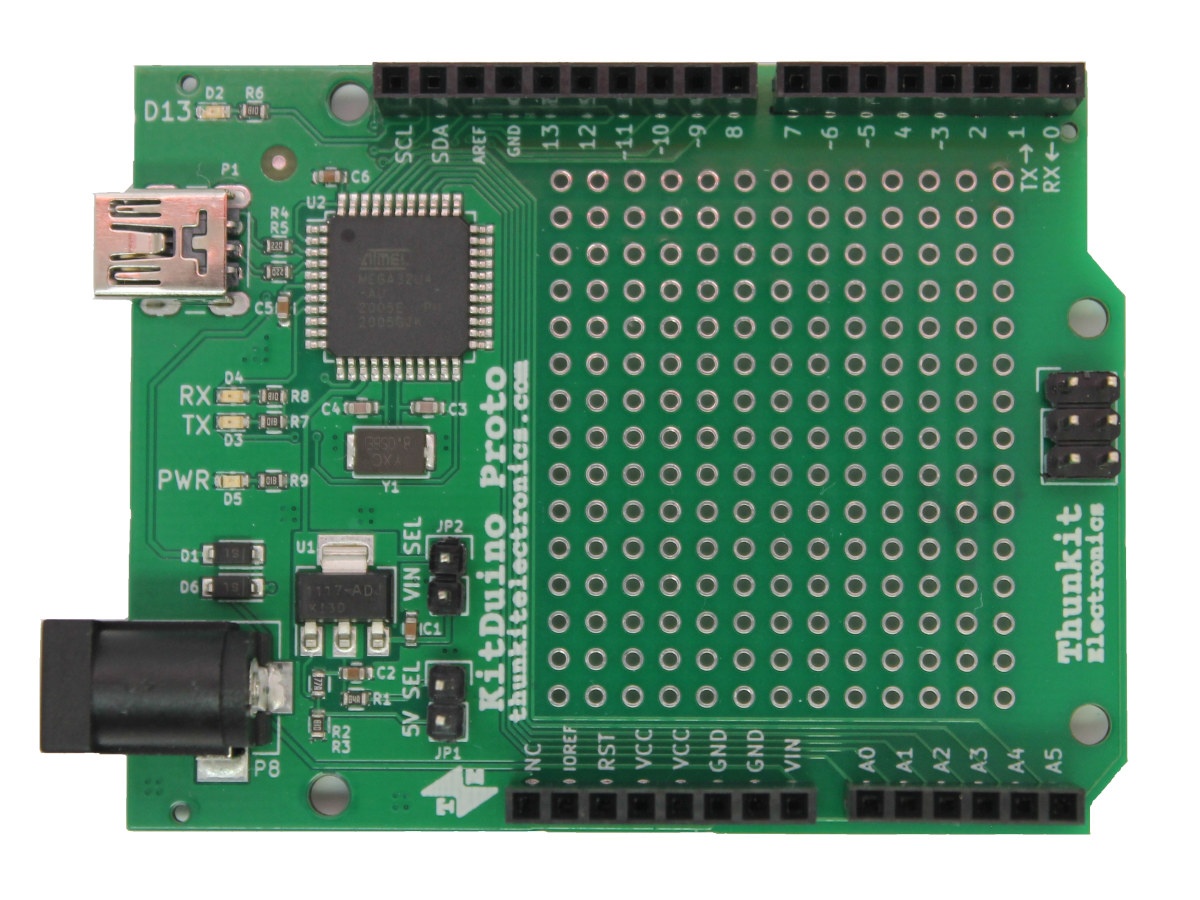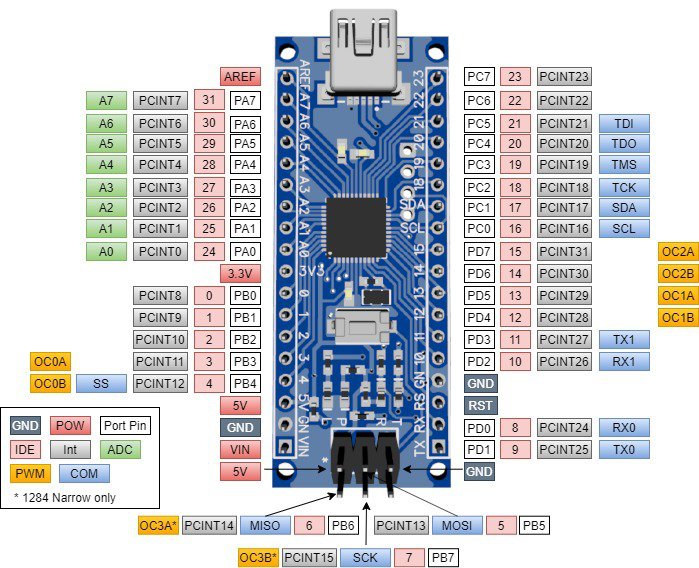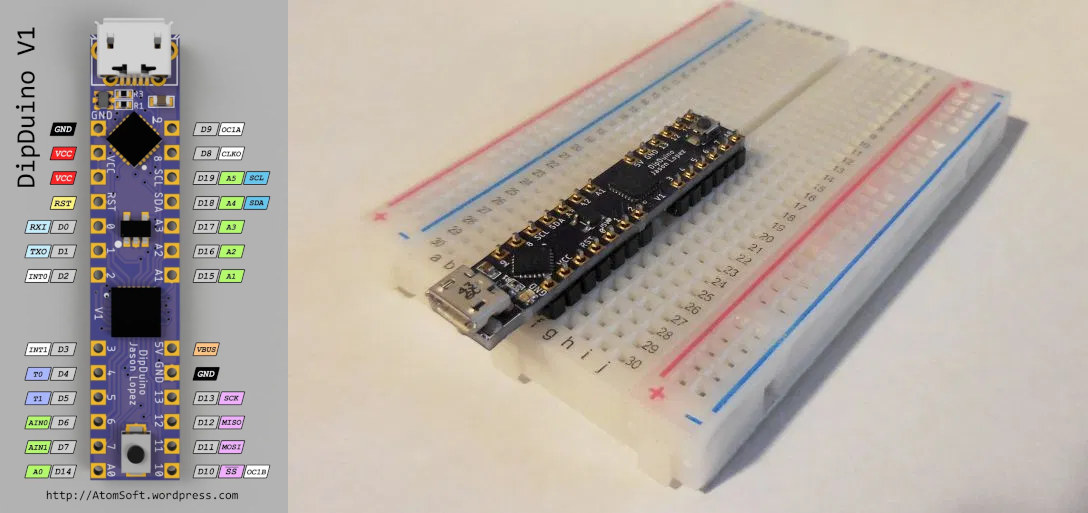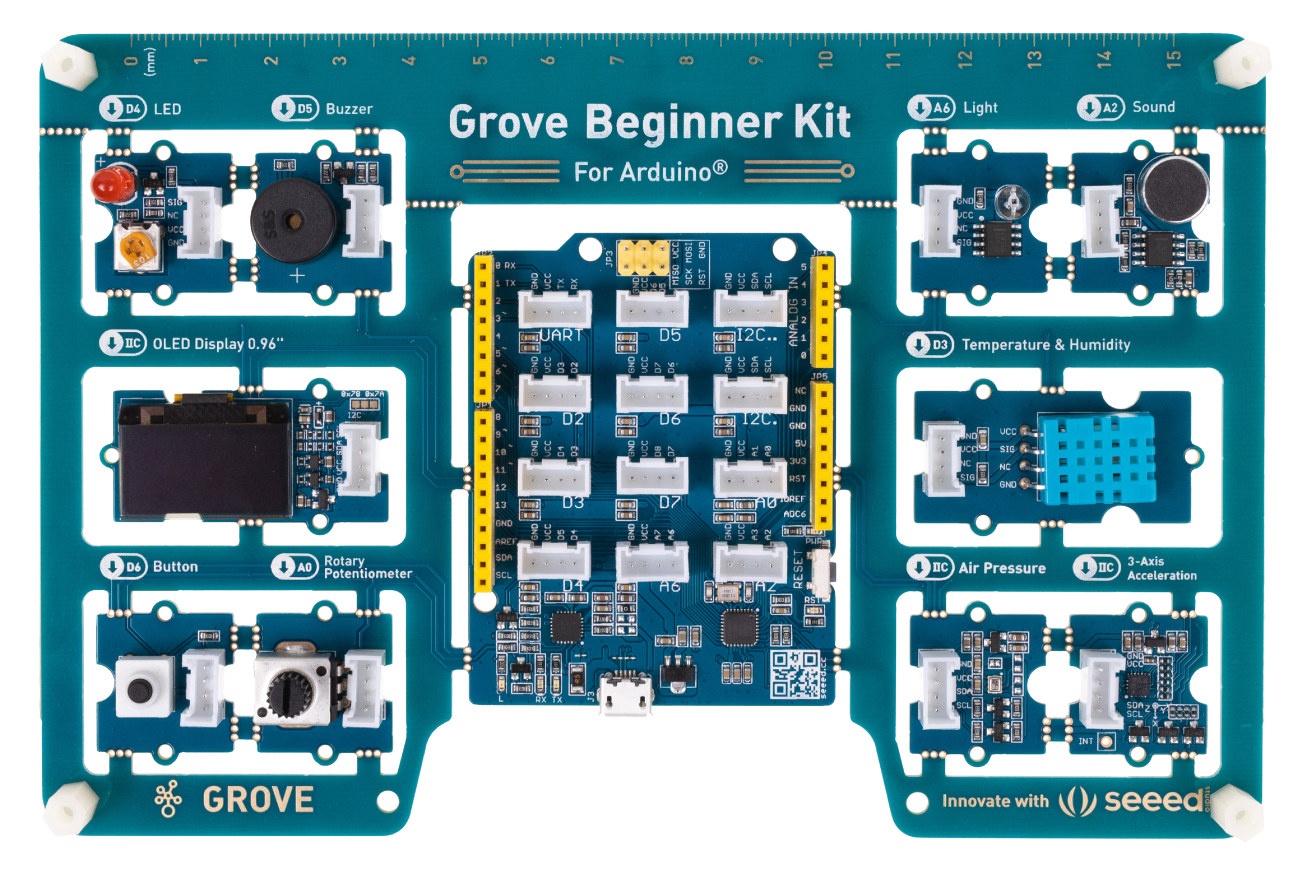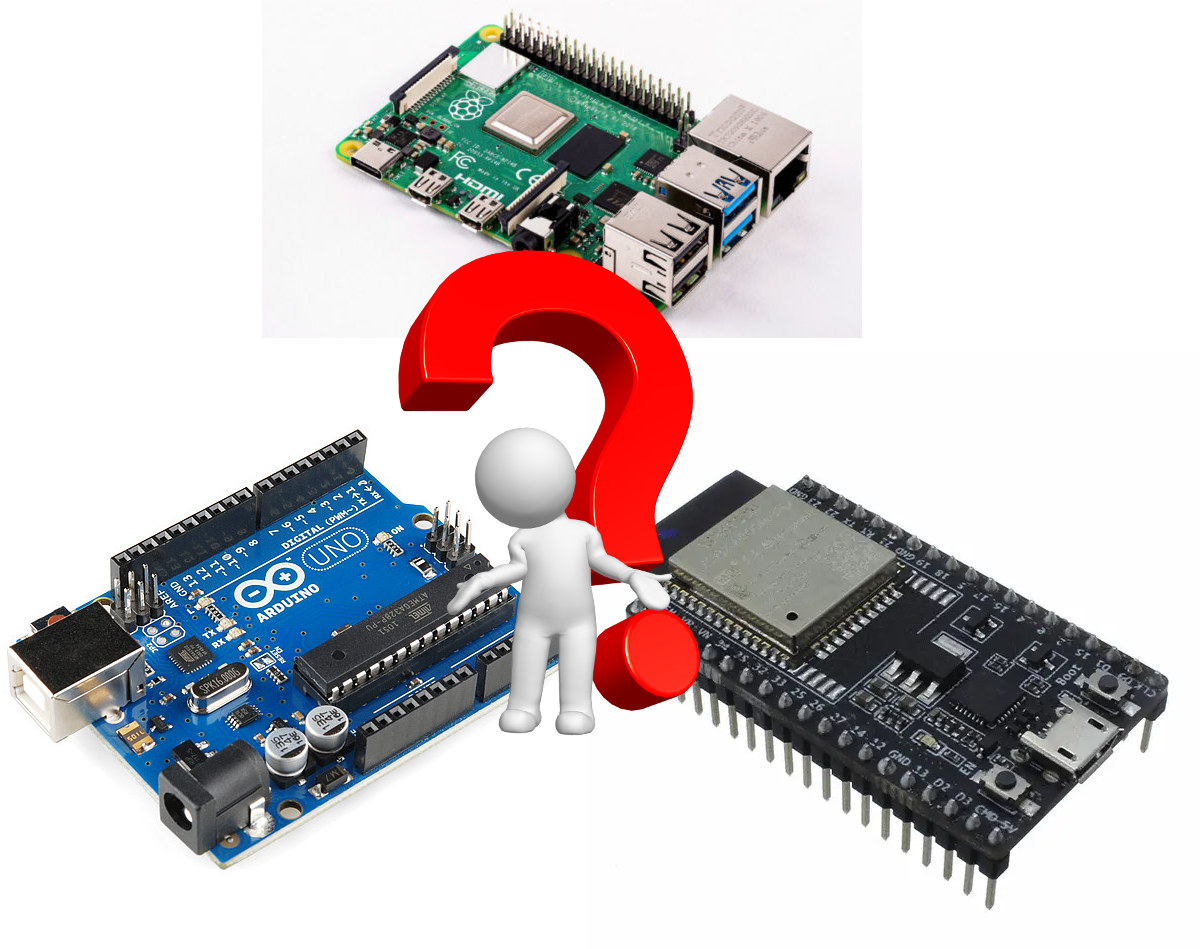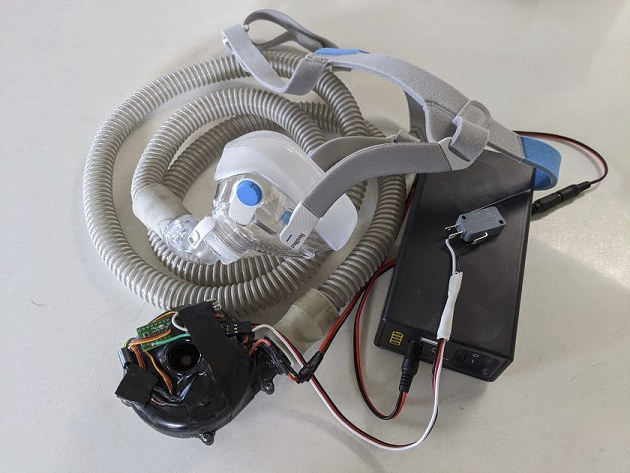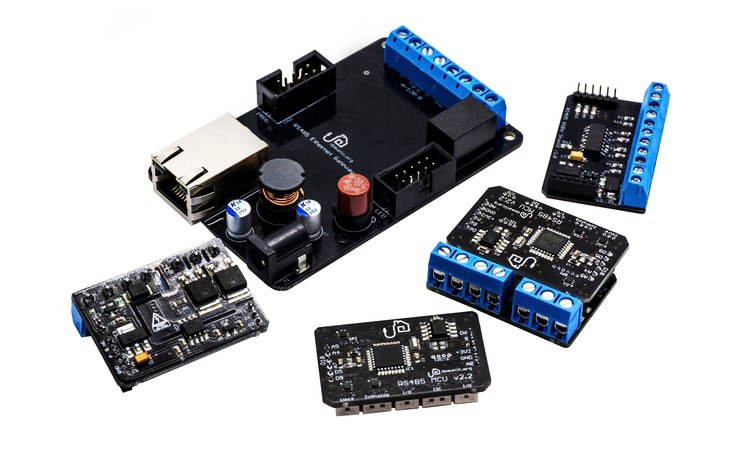ATMegaZero is an Arduino Leonardo compatible board based on Microchip ATmega32U4 8-bit AVR microcontroller that mostly follows Raspberry Pi Zero form factor with the 40-pin GPIO header, MicroSD card slot, and one micro USB port in the same location. The MIPI CSI camera connector makes place for an OLED display connector, and the HDMI port is obviously gone, but you also get an 8-pin header to easily install an ESP8266 based ESP-01 module to add WiFi connectivity. ATMegaZero specifications: MCU – Microchip ATmega32U4 microcontroller running at 16MHz with 32KB Flash, 2.5KB SRAM, 1KB EEPROM Storage – MicroSD card Display – 32-pin OLED display port compatible with 30-pin SSD1306 and SSD1331 based displays Wireless Connectivity – 8-pin header for optional ESP8266 ESP-01 WiFi module Expansion – 40-pin Raspberry Pi-inspired GPIO header with UART/SPI/I2C Debugging & Programming – Micro USB port, 6-pin programming header Misc – 4x LEDs, button Power Supply – […]
KitDuino Proto – An Arduino Compatible Board with a Built-in Prototyping Area
At the initial stage of development, many people would connect their Arduino board to a circuit build on a breadboard, and once this is done, some may either want to design their own board or for simpler circuits, simply move from the breadboard to a perfboard with components soldered to it. With Microchip ATMega32U4 based KitDuino Proto you could do that directly on the Arduino board itself since it comes with a small prototyping area. KitDuino Proto specifications: MCU – Microchip ATMega32u4 8-bit AVR MCU @ 8 MHz with 32 KB flash program memory, 2.5 KB SRAM, 1 KB EEPROM Expansion Arduino Leonardo compatible headers 6-pin SPI header Built-in 15 x 13 prototyping area. 3.3V or 5V I/Os Misc – Power LED, Tx/Rx LEDs, 1x user LED Power Supply 5V via Micro USB port (3.8V after regulation) 7+V via DC barrel jack or Vin pin for stable 5V rail 3.3V […]
Pandauino 644/1284 Narrow are Compact ATmega644/1284 Arduino Boards (Crowdfunding)
Pandauino 644 Narrow and 1284 Narrow boards powered by Microchip ATmega644 and ATmega1284 8-bit AVR MCU in a compact form factor slightly larger than the official Arduino Nano. The Pandaunino boards also come with up to eight times more RAM, more flash, as well as ten extra digital I/Os compared to Arduino Nano while keeping software compatibility. Pandauino 644/1284 Narrow boards specifications: MCU 644 Narrow – Microchip ATmega644 8-bit AVR microcontroller with 64KB flash, 4KB SRAM, 2KB EEPROM 1284 Narrow – Microchip ATmega1284 8-bit AVR microcontroller with 128KB flash, 16KB SRAM, 4KB EEPROM USB – 1x Micro USB port for power and programming I/Os – 24x digital I/Os including up to 8x PWM (6x max for 644 Narrow), 8x analog I/Os, 1x SPI, 2x USART, 1x I2C Power Supply – 5V input with on-board 5V and 3.3V regulators. Max current – USB: 500 mA limited by a PTC. Vin: 800 […]
Ultra-narrow DipDuino Arduino Compatible Board is a Perfect Breadboard Companion
We previously wrote about a uChip DIP-sized Arduino Zero compatible board with 0.3″ spacing between the two rows of pins making it perfect for breadboards as it left four rows on each side of the breadboard. There’s now another similar option with the appropriately named DipDuino board equipped with a Microchip Atmega328P MCU compatible with Arduino Pro or Pro Mini boards. DipDuino specifications: MCU – Microchip Atmega328P 8-bit AVR MCU with 32KB flash, 1024 Bytes EEPROM, 2KB SRAM USB – 1x Micro USB port for power and programming via CP2104 USB to serial chip Expansion Two rows of headers spaced by 0.3-inch (7.62mm) with up to 21x GPIOs, 5x analog inputs, I2C, SPI, UART, Reset, VCC and GND I/O voltage – 3.3V or 5V (different versions of the board) Misc – RGB LED for power and UART Tx/Rx; reset button Power Supply – 5V via Micro USB port; LDO for […]
Grove Beginner Kit for Arduino Features Arduino UNO Compatible Board & Ten Pre-wired Modules
Arduino boards are great to get started with electronics has they offer an ecosystem of expansion modules and libraries, as well as tutorials, that may it easy to get started with almost any projects. Seeed Studio Grove is a family of standardized modules with 4-pin headers using digital I/O, analog I/O, UART or I2C interfaces and allowing you to easily connect to compatible board such as Seeeduino Lotus board. You still need to connect the Grove module via cables, so Seeed Studio decided to create a big board called Grove Beginner Kit for Arduino that features Seeduino Lotus at the center and ten pre-wired and detachable Grove modules so no cabling is required to get started apart from a USB cable. List of Grove Beginner Kit for Arduino board and modules: Seeeduino Lotus ATmega320p board compatible with Arduino UNO compatible board and featuring 12 Grove connectors 10 pre-wired modules without […]
Know the Differences between Raspberry Pi, Arduino, and ESP8266/ESP32
CNXSoft: This is a guest post written in collaboration with SurfShark. When it comes to choosing a platform for STEM education or hobbyist projects, there are a number of low-cost, compact maker boards on the market. The most popular include the kid-friendly Raspberry Pi SBC that was designed with children in mind, Arduino boards for electronics projects, and more recently boards and modules based on EspressifESP8266 and ESP32 wireless SoC’s. In this post, we’ll look at the use cases and strong points for each of the boards whether you are just dabbling in the hobby of coding and DIY electronics, or you have a commercial project. Raspberry Pi The Raspberry Pi is a lineup of single-board computers (SBCs) that are from the UK and were first introduced in February 2012. These small computers were initially designed to teach students the basics of computer science, but they’ve found their way into […]
An Arduino based Open Source Ventilator to Fight against COVID-19?
COVID-19 has disrupted most people lives well beyond the health crisis, with an economic fallout on-going that may lead to a 24% GDP contraction in the US and up to 12% worldwide in Q2 2020, and I assume the consequences may span over several years, so we should do everything to mitigate any effects from the disease. Right now, the urgent part is to handle the health crisis, and there’s a shortage – or soon will be – of medical supplies such as ventilators for people in critical conditions, and if hospitals become full they’ll start refusing admissions of some people even in critical conditions, as it happened in Wuhan, letting people die at home. So there are various initiatives and projects to develop open-source ventilators. First, Innovation Management reports Ennomotive has launched a non-profit online competition for the ideation of low-cost, easy-to-build solutions with the goal of speeding up […]
GetWired Aims to Make RS-485 Wired Home Automation Affordable and User-friendly (Crowdfunding)
You may think about installing a home automation system, and WiFi may appear like the obvious way to go since it removes the need for cumbersome cabling, but wired networks are more reliable and secure, and there’s no need for batteries to be recharged or replaced. However, such wired home automation systems may be difficult to install and are often expensive, so Domatic decided to work on a solution to lower the costs and improve the ease of installation and use. Meet GetWired RS-485 wired home automation solution. Getwired is comprised of four modules communicating over the standard RS-485 protocol: MCU Module based on Microchip ATMEGA328PB MCU @ 8 MHz with 64KB SPI flash, an RS-485 transceiver, a 12-pin interface for connecting shields and 6 different Molex connectors for I/O including PWM, analog, interrupt pins, as well as I²C and 1-wire interfaces – Dimensions: 40 x 25 mm 2SSR Shield […]


